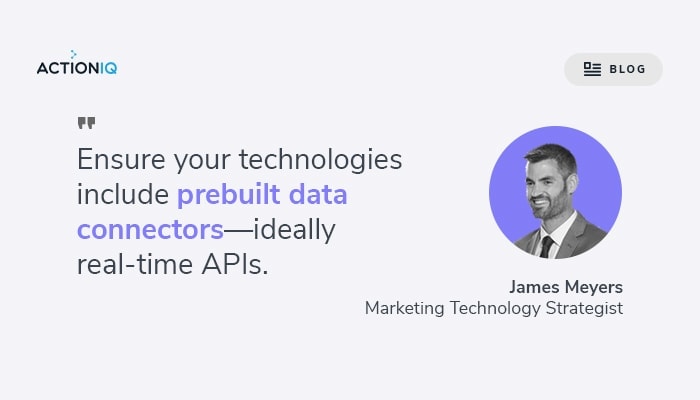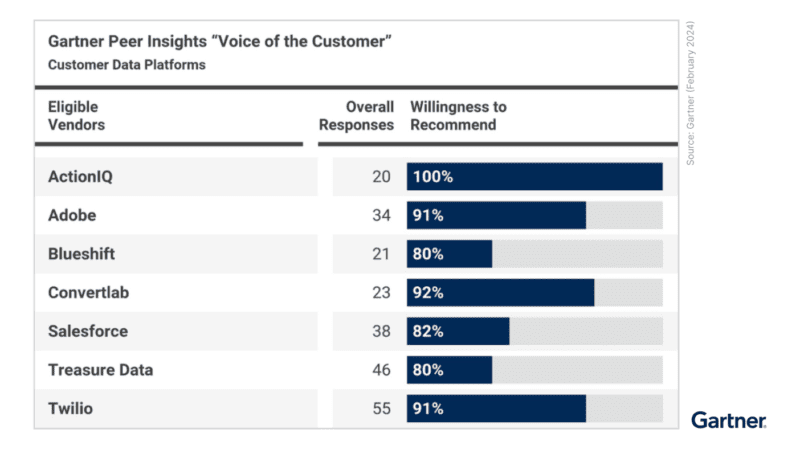Six Principles to Anchor Your Martech Stack Strategy

There’s No Such Thing As A Perfect Martech Stack Across All Brands, But…
There is a perfect Martech stack for your organization alone. More specifically, your organization’s marketing maturity, technical maturity, personalization goals, and industry all play differentiating factors contributing to your organization’s ideal, ‘moment-in-time’ stack.
Six Core Principles To Guide Your Martech Stack Planning
As you plan your technology stack, be sure to prioritize the principles below to set yourself up for long-term success. This includes evaluating vendors against their ability to further each of these six principles:
- Data democracy. Businesspeople need firsthand access to the data required to make everyday decisions—this is often achieved through user-friendly interfaces with governance and permissioning controls. This allows ad-hoc decisions to incorporate data that otherwise would be stuck behind an ‘ask-and-wait-for-days’ bottleneck. The result: more agility and innovation among the workforce. That being said, it is important to have appropriate permissioning capabilities to restrict access to non-essential features or sensitive data.
- Self-service operations. You can increase teammates’ productivity by giving them the tools to enhance their workflow. A marketer in charge of campaign operations needs technology to ideate, create, manage, deploy, and measure campaigns. A teammate in marketing analytics needs decisioning logic to create tests, raw data for sophisticated measurement, and tools for seamless collaboration.
- Full integration. Whether it’s your business users or your technical users, the outcome of integration remains the same—you don’t want them having to manually export, import, or configure data for use. Instead, ensure your technologies include prebuilt data connectors—ideally real-time APIs—that make data is ready for use at the moment it’s needed.
- Future longevity. A tech stack that won’t support your organization beyond three years from now is a short-lived solution. Leaders should implement technologies with features that fulfill today’s needs (e.g. data democracy), as well as support tomorrow’s needs (e.g. prescriptive recommendations).
- Single customer view. If leaders’ goals are to provide a seamless customer experience whenever (and wherever) a customer interacts, the organization needs a unified profile for each customer that reflects all of their interactions. Without it, sales agents or customer service agents will not be able to recommend relevant next steps based on how the customer has recently engaged.
- Centralized decision brain. Ideally, your technology stack has a centralized decision making function that has access to all recent interactions, is replete with predictive analytics, and keeps accounts of recent recommendations to prevent duplication. Conversely, an ecosystem where decisions are made in siloed, channel-specific tools creates the risk of inaccurate recommendations.
To schedule time with an industry expert for tailored guidance and an action plan that meets your objectives, visit our Meet The Experts page to learn more.





